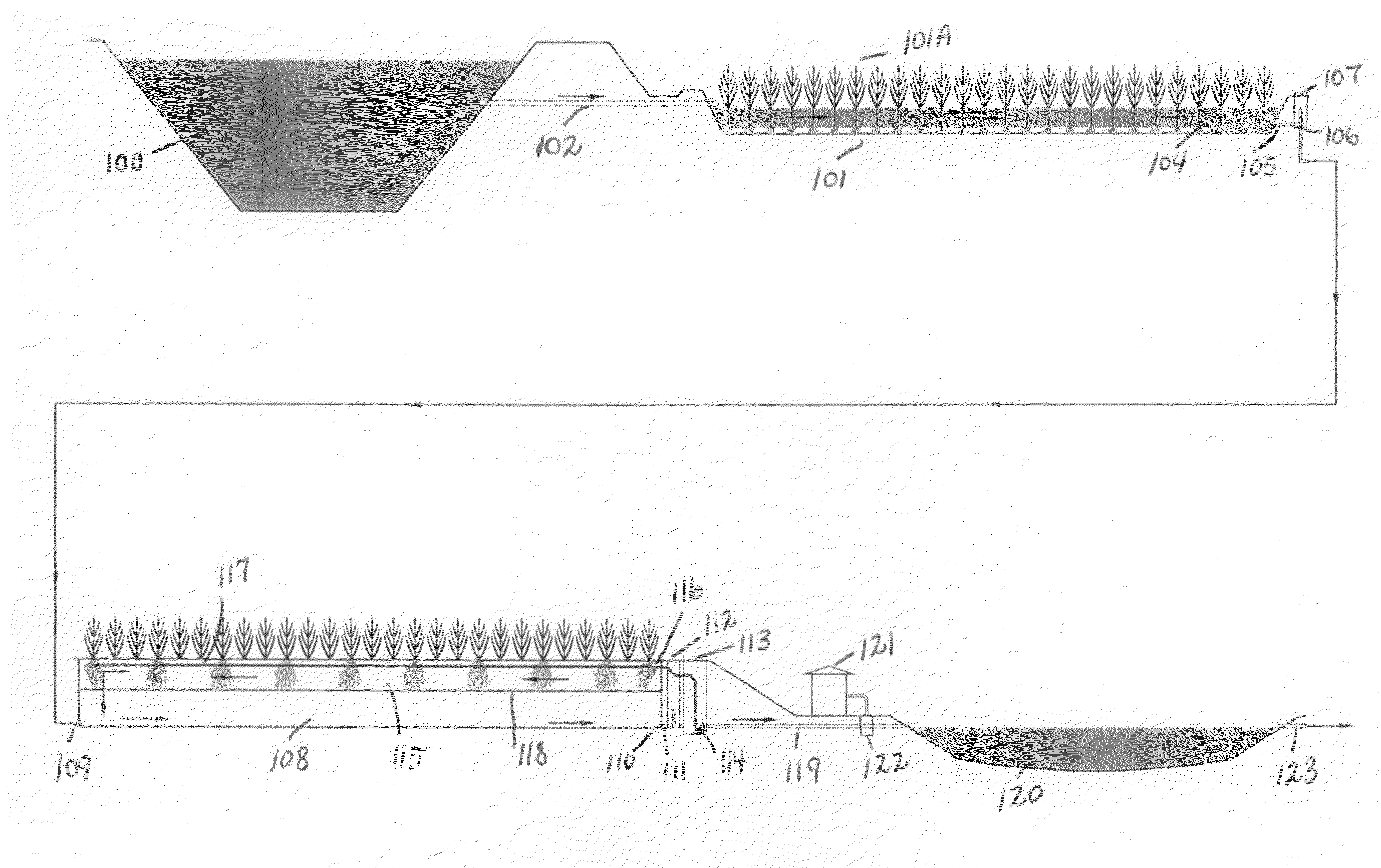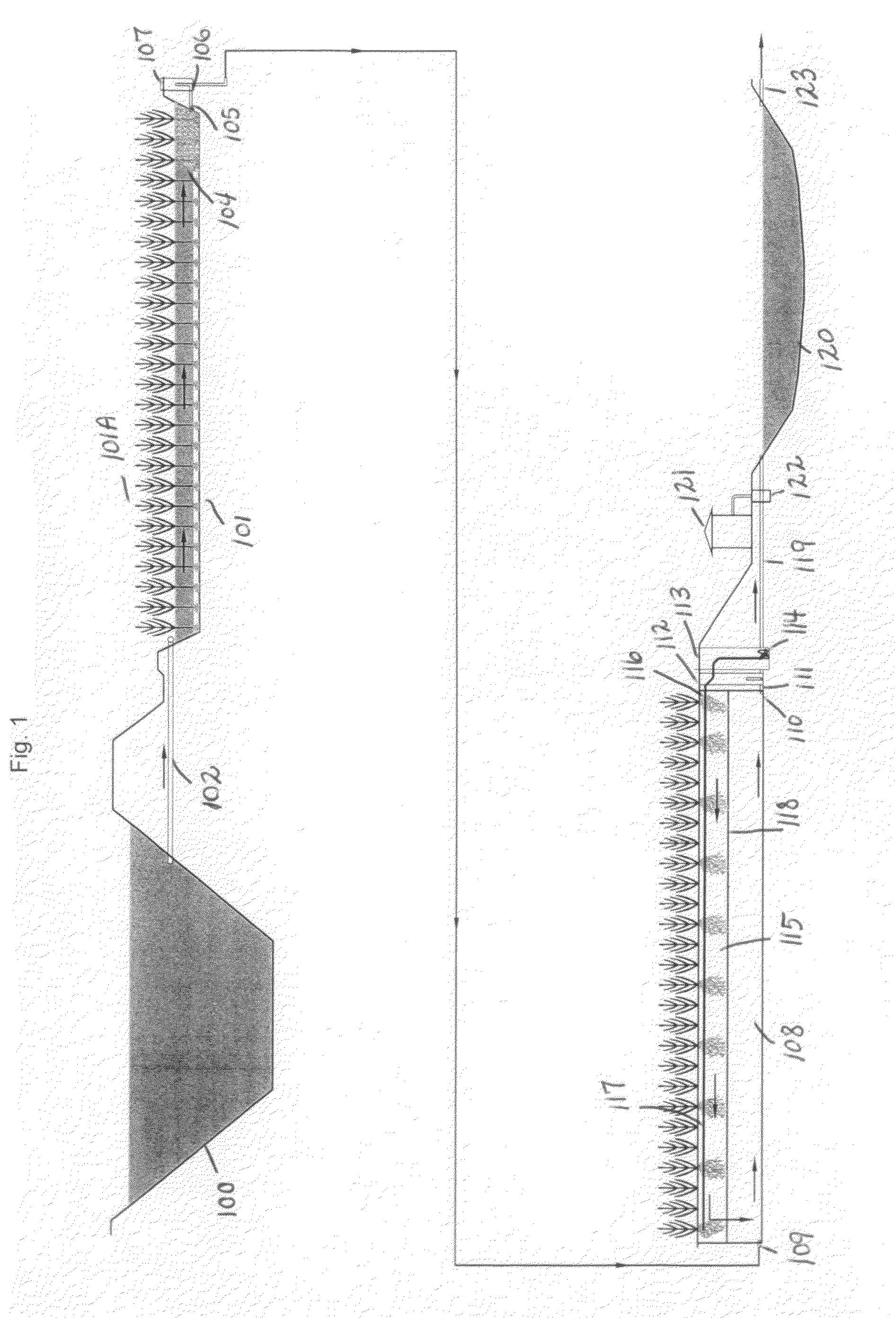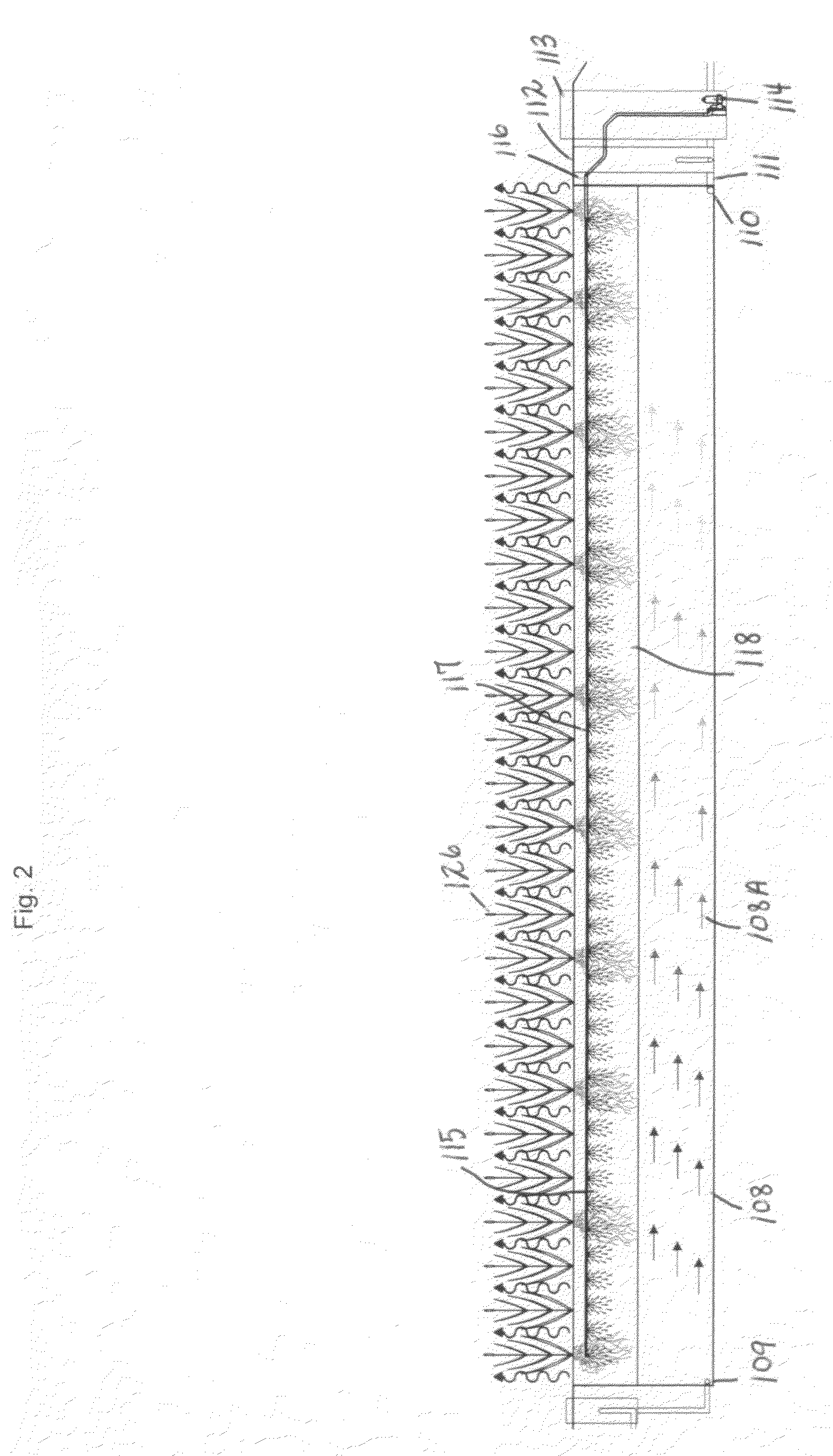Eco-treament system
a technology of environmental protection and treatment system, applied in biological water/sewage treatment, water treatment multi-stage treatment, water/sewage multi-stage treatment, etc., can solve the problems of increasing the cost of operating cafos, driving down property values, and several prior art techniques, so as to reduce the required area, enhance the landscape, and reduce the nutrient load of wastewater
- Summary
- Abstract
- Description
- Claims
- Application Information
AI Technical Summary
Benefits of technology
Problems solved by technology
Method used
Image
Examples
Embodiment Construction
[0020]The two types of constructed wetlands are free-water surface (FWS) and subsurface-flow wetlands (SF). FWS wetlands have shallow water depths and usually support a variety of emergent, submergent, and floating species of wetlands plants. FWS wetlands are also termed “aerobic wetlands”, and treatment primarily occurs from oxidation, hydrolysis, and sedimentation. FWS wetlands are recommended for the treatment of livestock facility wastewater. It is a leading choice for secondary treatment of animal waste from lagoons. FWS wetlands have been used to treat effluent from waste treatment lagoons, waste storage ponds, and milk houses as well as runoff from open feedlots.
[0021]Subsurface-flow wetlands (SF) are routinely used for the treatment of sanitary wastewater in small applications. As the name implies the water level is kept below the surface of the wetland by the use of a porous media, usually gravel. The wastewater flows horizontally through the media and is exposed to the roo...
PUM
| Property | Measurement | Unit |
|---|---|---|
| concentration | aaaaa | aaaaa |
| strength | aaaaa | aaaaa |
| organic strength | aaaaa | aaaaa |
Abstract
Description
Claims
Application Information
 Login to View More
Login to View More - R&D
- Intellectual Property
- Life Sciences
- Materials
- Tech Scout
- Unparalleled Data Quality
- Higher Quality Content
- 60% Fewer Hallucinations
Browse by: Latest US Patents, China's latest patents, Technical Efficacy Thesaurus, Application Domain, Technology Topic, Popular Technical Reports.
© 2025 PatSnap. All rights reserved.Legal|Privacy policy|Modern Slavery Act Transparency Statement|Sitemap|About US| Contact US: help@patsnap.com



